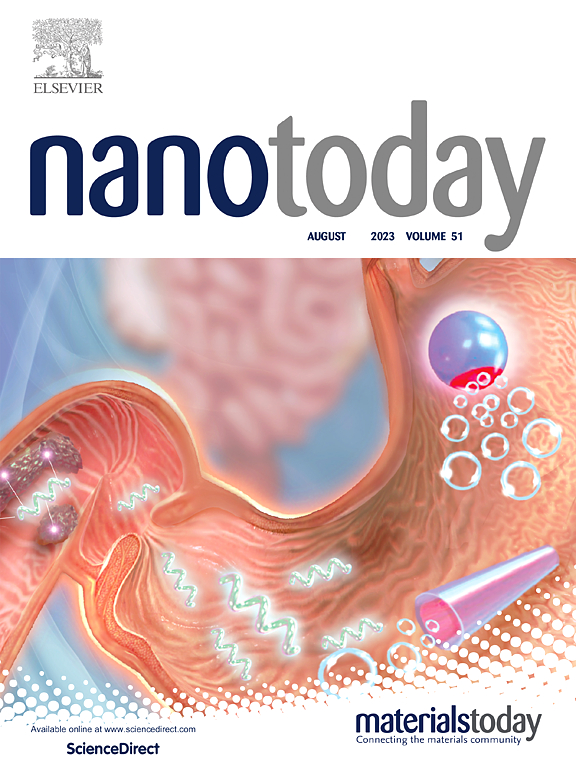A carrier-free DNA nanoplatform for efficient three-in-one tumor therapy in vivo
IF 13.2
1区 材料科学
Q1 CHEMISTRY, MULTIDISCIPLINARY
引用次数: 0
Abstract
Drug delivery systems, based on chemical modification and controlled self-assembly of nucleic acid, have played an important role in the treatment of various diseases. Herein, we report a chemically conjugated DNA nanoplatform for efficient three-in-one tumor therapy in vivo. In our design, five copies of hydrophobic chemo-drug (camptothecin, CPT) are conjugated together by a branched organic molecule with an additional arm to introduce a DNA aptamer for targeting (Apt-5CPT). Meanwhile, a photosensitizer (HPPH, for photodynamic therapy) is efficiently organized at the terminal of an antisense oligonucleotide (AS, for gene therapy) to obtain another amphiphilic monomer (HPPH-AS). After co-assembly, a carrier-free DNA nanostructure, with the combination of chemotherapy, photodynamic therapy, and gene therapy, can be efficiently constructed for drug delivery. Under laser irradiation, the generated reactive oxygen species (ROS) can further facilitate their lysosomal escape to achieve subsequent glutathione (GSH)-based drug release for three-in-one tumor therapy in vivo. This rationally developed DNA nanoplatform-based drug delivery system presents a new avenue for the development of tumor therapy.
无载体DNA纳米平台在体内高效三合一肿瘤治疗
基于核酸化学修饰和受控自组装的药物传递系统在多种疾病的治疗中发挥了重要作用。在此,我们报告了一种化学共轭DNA纳米平台,用于有效的体内三合一肿瘤治疗。在我们的设计中,五个疏水化学药物(喜树碱,CPT)的拷贝通过一个带有额外臂的支链有机分子偶联在一起,以引入靶向的DNA适体(Apt-5CPT)。同时,光敏剂(HPPH,用于光动力治疗)被有效地组织在反义寡核苷酸(AS,用于基因治疗)的末端,以获得另一个两亲性单体(HPPH-AS)。通过共组装,无载体DNA纳米结构可以有效地构建用于药物递送的化学疗法、光动力疗法和基因疗法的组合。在激光照射下,所产生的活性氧(ROS)进一步促进其溶酶体逃逸,实现后续以谷胱甘肽(GSH)为基础的药物释放,在体内进行肿瘤三合一治疗。这种合理开发的基于DNA纳米平台的给药系统为肿瘤治疗的发展提供了新的途径。
本文章由计算机程序翻译,如有差异,请以英文原文为准。
求助全文
约1分钟内获得全文
求助全文
来源期刊

Nano Today
工程技术-材料科学:综合
CiteScore
21.50
自引率
3.40%
发文量
305
审稿时长
40 days
期刊介绍:
Nano Today is a journal dedicated to publishing influential and innovative work in the field of nanoscience and technology. It covers a wide range of subject areas including biomaterials, materials chemistry, materials science, chemistry, bioengineering, biochemistry, genetics and molecular biology, engineering, and nanotechnology. The journal considers articles that inform readers about the latest research, breakthroughs, and topical issues in these fields. It provides comprehensive coverage through a mixture of peer-reviewed articles, research news, and information on key developments. Nano Today is abstracted and indexed in Science Citation Index, Ei Compendex, Embase, Scopus, and INSPEC.
 求助内容:
求助内容: 应助结果提醒方式:
应助结果提醒方式:


